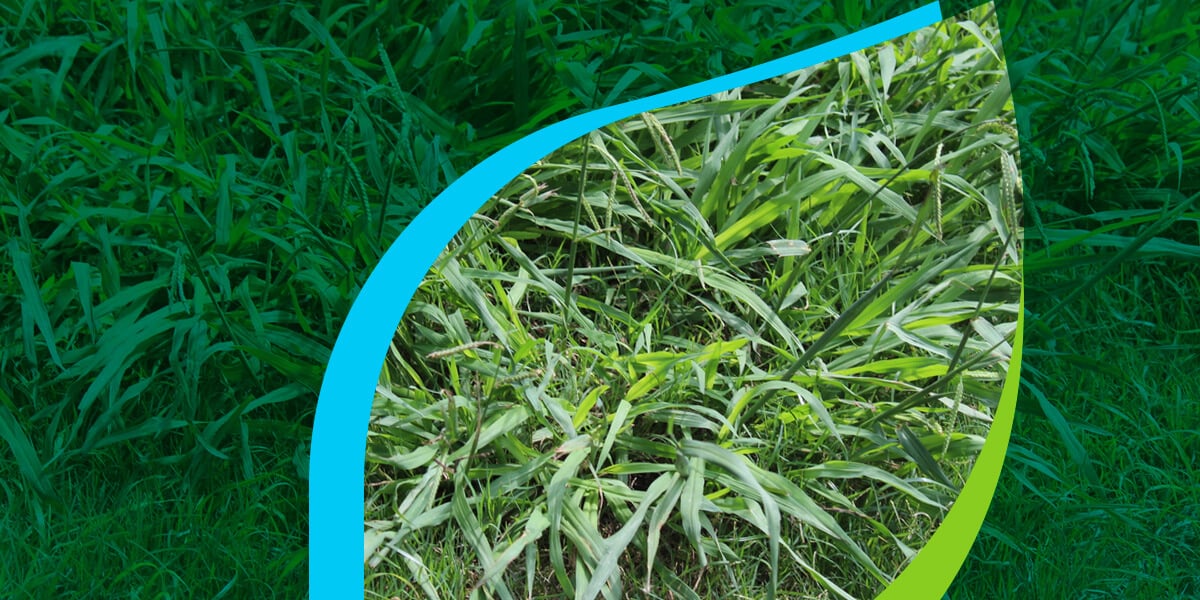
Crabgrass is part of a large family of invasive weeds that grows throughout the United States, especially in spring and summer. It frustrates property owners by sprouting almost anywhere it can find soil, water and sunlight, outcompeting other plants in your yard and even sprouting through cracks in your driveway.
While many crabgrass species exist, two types are particularly problematic for homeowners — hairy or large crabgrass and smooth crabgrass. An infestation of these weeds can be challenging to control once it has spread. Crabgrass has tough, sprawling, shallow roots that often break off when you try to pull the weed out, allowing it to grow back quickly.
Determining what distinguishes crabgrass from other grass species will prevent it from flourishing, leading to a beautiful, lush and thriving lawn.
Crabgrass has several distinctive features:
At a glance, it can be hard to distinguish crabgrass from Bermuda grass, coarse tall fescue and quackgrass. Here are a few tips for telling crabgrass apart from these other genera:
There are approximately 35 crabgrass species, many of which grow in the United States. Here are the most commonly found in Maryland lawns.
Large or hairy crabgrass (Digitaria sanguinalis) has dense hair growth covering its leaves and sheaths. The leaves are short, broad and tapered. Large crabgrass prefers warm temperatures and can also withstand droughts. It is an opportunistic weed, prospering in bare soil that receives direct sunlight.
Smooth crabgrass (Digitaria ischaemum) and hairy crabgrass have similar overall appearances, but the primary distinction is that smooth crabgrass has hairless leaf blades and sheaths. Like hairy crabgrass, smooth crabgrass grows well in lots of direct sunlight, but unlike hairy crabgrass, it tends to thrive more with adequate moisture. The weed has round stems and fibrous roots and may also have purple-tinged sheaths at its base.
Hairy and smooth crabgrass are the two most prevalent and unwelcome species throughout the U.S., but you may also struggle with these other variants in your yard.
Learning the answers to these frequently asked questions can help you rid your lawn of crabgrass and perhaps even stop it from growing in the first place!
Yes, you can eliminate crabgrass without harming your lawn if you use products that target weeds without killing healthy grass. Getting rid of crabgrass is essential for maintaining a lush, healthy and good-looking lawn, but so is understanding organic lawn care, including choosing quality organic products and applying them correctly to protect your lawn.
Hiring a professional company like OrganicLawns is a safe and effective way to protect your lawn while eliminating unwanted species. We use environmentally friendly products to service your lawn and keep it free of crabgrass and other invasive weeds.
Your mowing techniques can cause crabgrass to take over your lawn. For example, cutting your grass too short reduces the density of healthy grass, allowing opportunistic crabgrass to thrive. It also exposes the soil to more direct sunlight, creating ideal crabgrass growing conditions.
Adjust your mower’s deck height or let your lawn grow slightly longer to block direct sunlight from reaching the soil, preventing crabgrass seeds from growing. You may also choose to low-mow your grass in the cooler months when there isn’t enough direct sunlight for crabgrass to thrive.
You might stop the spread of crabgrass naturally if you are fortunate enough to catch it early. You can try pulling the weeds out, using mulch to smother the plants or dousing them with boiling water and vinegar or citric acid. Still, the most reliable and effective way to prevent and control the spread of crabgrass species is to use quality organic weed control products and professional techniques.
Crabgrass is an invasive species that robs your grass and plants of essential nutrients and water, so the quicker you can kill it, the better. Connect with OrganicLawns today if you have a crabgrass problem or want to prevent weeds from taking over your lawn.
We can tailor a wide range of services to suit your lawn care needs, including organic weed control techniques using environmentally friendly fertilizer and other products. Our professional technicians provide friendly, expert weed control solutions. Contact OrganicLawns to get a lush, healthy lawn free of crabgrass species.